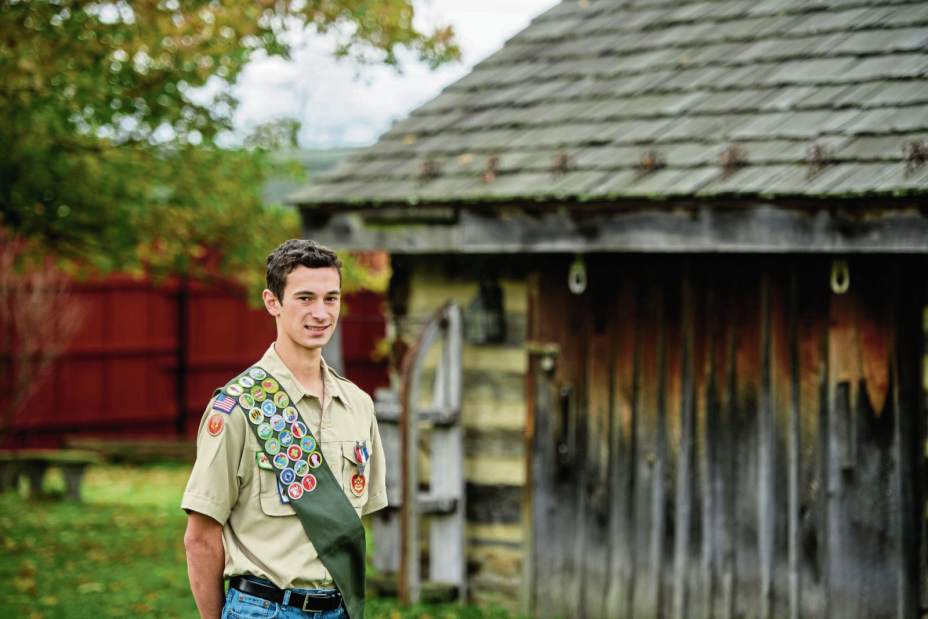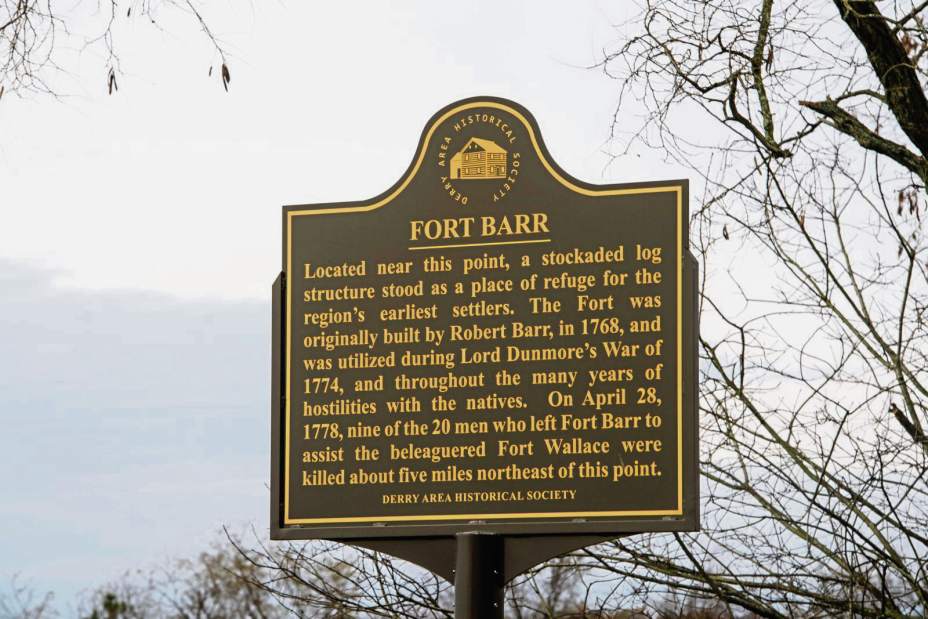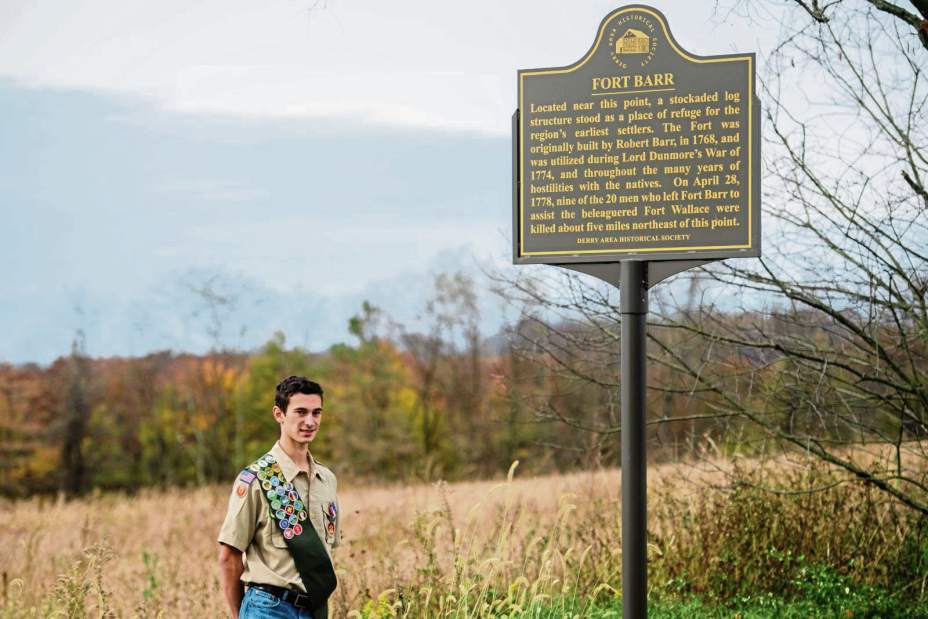Eagle Scout earns rank by spotlighting Derry Township's historic forts
Ean Thomas Lamolinara has made his mark on local history — by pointing out vanished landmarks of Derry Township’s pioneer era.
Thanks to the work of the Greater Latrobe Senior High School junior from Unity, motorists on three local roads will find signs marking three spots where 18th-century residents established small fortifications as a refuge from hostile natives.
Lamolinara began working on the sign project about two years ago and — with the help of family, fellow Scouts and members of the Derry Area Historical Society — was able to complete it in time to earn his Eagle Scout rank July 30. Selecting the project wasn’t difficult, but bringing it to fruition required research and legwork.
“With my father and grandfather being involved in the historical society, and my interest in history, we came to the idea of, ‘What can we do for the historical society?’ ” Lamolinara said. “That’s where I got the idea for doing this project.”
To begin, Lamolinara turned to his grandfather, Ed, a charter member of the society who had knowledge about at least one of the former defensive posts — Fort Barr along Atlantic Road off Route 982. He also pored over local history books and talked to other society members in an effort to pinpoint the sites of four other early forts in the township that saw use during the Revolutionary War.
Natural water sources were clues to some fort locations. Lamolinara’s father, Gary, an Eagle Scout and former historical society officer, spotted a spring while the pair were honing in on the site of Wilson’s Blockhouse, near Pizza Barn and Seger roads.
“We had a pretty good idea where (the fort site) was,” Gary said. “We walked through the woods and came across an artisan spring. That was a pretty good indication that we were within the area.”
A source of water was a necessity for the early forts since they could be under siege by raiding parties, historical society President William Snyder noted.
Snyder helped Lamolinara decide on text for the fort signs. The one at Wilson’s Blockhouse notes it was equipped with heavy wooden doors and covered windows with rifle holes, so that “a small group of six to eight men could easily defend themselves from twice their number of attackers.”
In most cases, not even foundations are visible where Derry Township’s log forts once stood. The exception is Fort Elder, a 1783 fortified cabin that stood along Rushwood Road north of Route 22.
“The only physical remains remotely related is a small 1812-era log spring house,” Snyder said. Unfortunately, he added, the roof recently fell in.
Like all fort sites in the township, it is on private property. Snyder said the society offered the owner assistance in repairing the spring house and is waiting to “see what route they’d like to take.”
Lamolinara found a local company, Special Lite Products, to fabricate and donate three roadside signs that meet federal highway standards and are modeled after the historic site markers issued by the state Historical and Museum Commission. Lamolinara’s signs are distinguished by the appearance of the historical society’s logo, instead of the state seal.
“I wanted them to be big and tall, something that would catch someone’s attention while they’re driving by,” said Lamolinara, who plans to pursue aviation and business studies in college.
Family members contributed
materials and tools needed to erect the signs, each within a few hundred yards of the fort location Lamolinara documented.
The three signs Lamolinara and his helpers installed are along township roads and were approved by local municipal officials. But he wasn’t able to reach an agreement with PennDOT to install signs for two more fort sites along state roads — Fort Wallace, near Route 217 and Pizza Barn Road, and Fort Pomeroy, along Bergman Road.
“The installation of the signs wasn’t anything crazy,” Lamolinara said of the work involved. “But the planning and getting the permission for the signs — I was sending letters and emails and talking on the phone with some pretty high-end people. It really got me outside of my comfort zone.”
Though he wasn’t able to proceed with markers on the state roads and was challenged to find time for both the project and playing on the varsity hockey and lacrosse teams at Greater Latrobe, he said, “It was a good learning experience.”
Donations helped cover the costs of a new society brochure that guides visitors to the fort sites. Snyder hopes more roadside signs in the same style can be placed at other historic spots in the township, including the two unmarked forts.
Snyder feels that the general population’s interest in local history may be at an ebb now. “It’s projects like Ean’s that will bring it back to the forefront,” he said.
“I hope my project will help people take an afternoon to go out and be able to learn a little bit about their local history and, hopefully, expand the Derry Area Historical Society, as well,” Lamolinara said.
Jeff Himler is a Tribune-Review staff writer. You can contact Jeff at 724-836-6622, jhimler@tribweb.com or via Twitter @jhimler_news.



